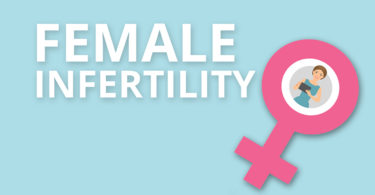SCOPE OF HOMOEOPATHY IN PELVIC INFLAMMATORY DISEASE (P.I.D)
Abstract: Pelvic inflammatory disease (PID) is a spectrum of infectious and inflammations of upper genital tract organs typically involving the endometrium, fallopian tube, pelvic peritoneum and surrounding structures. Thus, is includes all the conditions like endometritis, salpingitis, pelvic peritonitis or tubo-ovarian abscess. PID is mostly a poly-microbial infection caused by organisms like N. Gonorrhoeae, Chlamydia, Trachomatis, Mycoplasma hominis etc.
Keywords: pelvic inflammatory disease (PID), Neisseria Gonorrhoeae, Chlamydia, Trachomatis, Mycoplasma hominis, homoeopathic therapeutics.
Introduction: PID is an infectious and inflammations of upper genital tract organs typically involving the endometrium, fallopian tube, pelvic peritoneum and surrounding structures. PID can be difficult and frustrating diagnosis; patient commonly present with nonspecific symptoms such as vaginal discharge, postcoital bleeding, dyspareunia, and dysuria. The united states centre for disease control and prevention (CDC) recommended that clinicians make the clinical diagnosis of PID and start empiric treatment in sexually active women with unexplained lower abdominal or pelvic pain with cervical motion tenderness, uterine tendered, and adnexal tenderness. Incidence of PID is approximately two -thirds of this diseases is restricted to younger women less than 25years and remaining one third limited among 30 years or older.
Risk factor: Being a sexually active woman younger than 25years old and multiple sexual partners. An intrauterine device (IUD), which is placed into the uterus. An endometrial biopsy, during which sample of tissue is taken for analysis, increase a chance of infection and PID. Childbirth, abortion, if bacteria enter the vagina, can cause PID. In some case of appendicitis where infection spread from appendix to pelvic region.
Sign and Symptoms: Patient with PID presents with bilateral abdominal and pelvic pain, fever with lassitude and headache, fatigue, excessive and irregular vaginal bleeding, abnormal purulent vaginal discharge, dyspareunia, nausea and vomiting, frequent urination, the lower abdominal quadrants are tender, cervix is congested. Complications of PID can cause the scarring of the pelvic organs which may leads long term (chronic) pelvic pain, ectopic pregnancy, infertility, tubo-ovarian abscess. Investigations: Identification of organism- discharge from urethra Serological test- raised ESR, Leucocytosis Laparoscopy Sonography – abdomen and pelvis Culdocentesis
Treatment and Management: Community based approach to increase public health awareness. Prevention of sexually transmitted disease with knowledge of healthy safer intercourse. Liberal use of contraceptives. Routine screening of high-risk population. To control infections. To prevent infertility and late sequels.
HOMOEOPATHIC THERAPEUTICS IN PELVIC INFLAMMATORY DISEASE:
APIS MELLIFICA: soreness and stinging pains, ovaritis worse in right ovary; dysmenorrhea, metritis, metrorrhagia, ovarian cysts. Great tenderness over abdomen and uterine region specially involve the right side of pelvic organs. Worse by touch, pressure, warmth; better by cold, uncovering, open air.
BELLADONA: sensitive, forcing pelvic organs downwards as if all viscera would protrude outside; menorrhagia, dysmenorrhea. Worse by motion, touch, jerk, after midnight; better by rest and warm room.
CIMICIFUGA RACEMOSA: Ovarian neuralgia pain in ovarian region shoots upward and down the anterior surface of thighs. Menses profuse, dark, coagulated, offensive with backache. Worse by morning, cold, during menses, profuse flow more suffering; better by warmth, eating.
CANTHARIS VESICATORIA: act on sexual and urinary organs causes violent inflammation, PID is due to retained placenta with dysuria. Puerperal metritis with cystitis. Menses too early too profuse; black swelling of vulva with irritation. Worse by touch micturition, drinking cold water and coffee; better by rubbing.
LACHESIS: At climacteric age uterine and ovarian pains specially left sided with palpitations, flashes of heat, haemorrhages. Menses black, scanty, lumpy, acrid, vicarious from nose. Worse by after sleep, pressure of cloth around waist; better by after free discharge and loosing clothes.
MEDORRHINUM: supressed gonorrhoea, chronic pelvic disorder’s causes pelvic diseases. Metrorrhagia at climacteric age; dark, clotted, offensive; in gushes on moving; with malignant disease of uterus. worse by thinking of the complaints, from daylight to sunset, heat; better by at seashore, lying on abdomen, damp weather.
MERCURIUS CORROSIVE: suppressed gonorrhoea causes PID. Inflammation of rectum and bladder with burning and urethral orifices red, swollen. Leucorrhoea pale, yellow. Worse by evening, night, acids; better by at rest.
SABINA: PID due to abortions and premature labour. Pain from sacrum to pubis, from below upward, shooting up the vagina, haemorrhages partly clotted and partly fluid. worse by least motion, heat; better by cold application.
SECALE CORNUTUM: PID due to abortion, childbirth. Metritis, ovaritis; abdomen bloated tight; dark foetid menses; brownish offensive leucorrhoea. Worse by heat, warm covering; better by cold, uncovering. Other medicines like Arnica, Arsenic album, Bryonia alba, Iodium, Kreosotum, Lycopodium, Pulsatilla, sepia, veratrum viride etc can also be prescribed on the bases of symptom similarity.
Author: DR. NUPUR BAISWAR M.D (HOM) SCHOLAR BAKSON HOMOEOPATHIC MEDICAL COLLEGE AND HOSPITAL GREATER NOIDA, UTTAR PRADESH.





